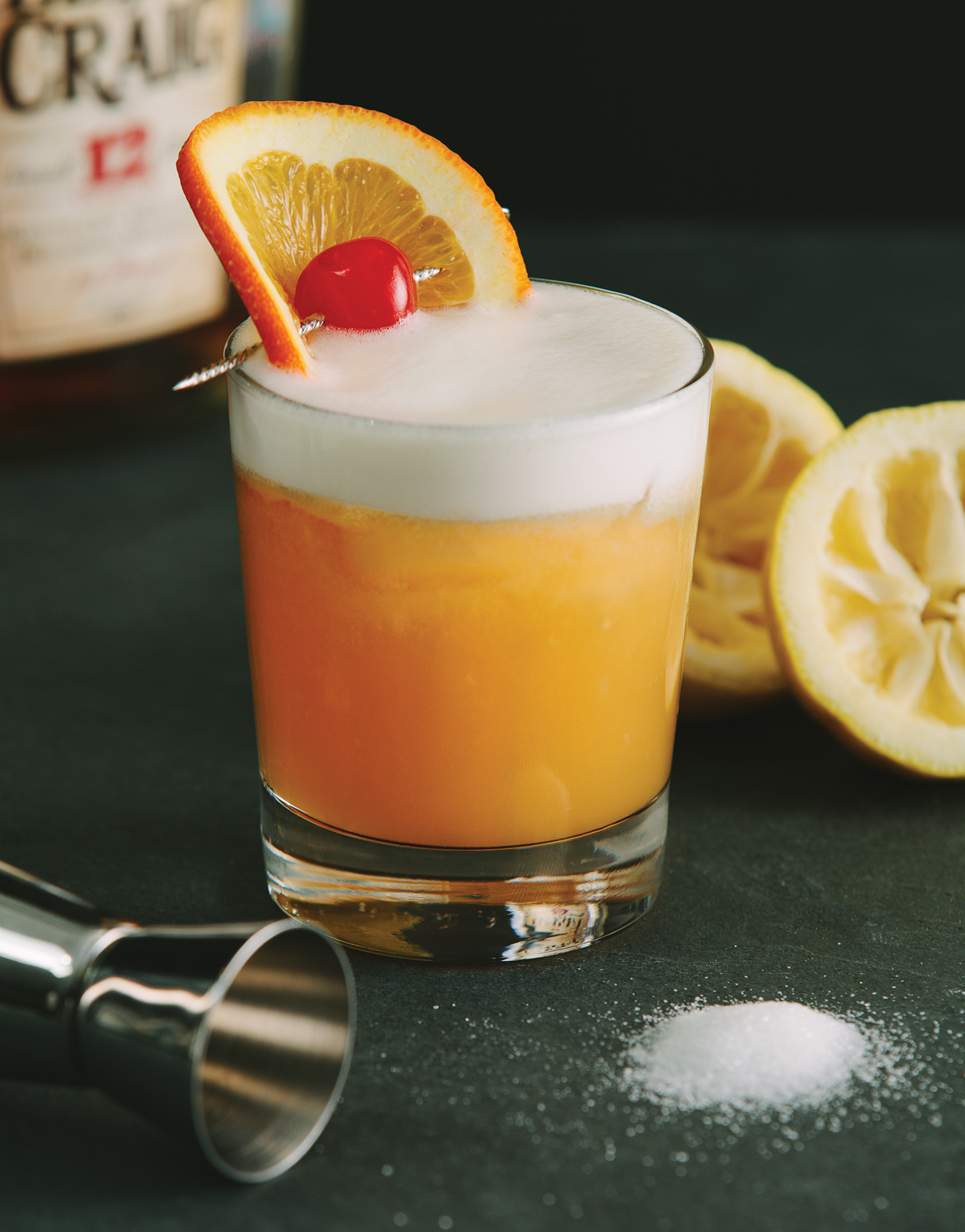The Whiskey Sour, in its simplest form, sees half a glass full of liquor balanced by equal parts sweet and sour. It arrived in the 1700s, when sailors in the British Navy started mixing lemon and lime juice with rum to prevent scurvy. It didn’t take long for the rum to be swapped with whiskey or gin, and for some sugar to be added to the equation.
Straightforward, unpretentious and pleasantly potent, the drink was popular in saloons throughout the United States during the 19th century. American bartender Jerry Thomas wrote the initial handbook on how to mix drinks in 1862, which included the first Whiskey Sour recipe.
The drink’s resurgence today stems from its widespread presence among the upper class during Prohibition. While the sale, transport and manufacturing of alcohol was illegal in the United States from 1920 to 1933, notorious gangsters such as Al Capone kept the country supplied. Canadian rye whiskey, particularly Canadian Club, was smuggled across the border and sold in secret drinking establishments, called speakeasies, where the elite indulged.
Mike Angus, the general manager at The Next Act, is aware of the drink’s dangerous past. “People were going to go to jail if they were caught drinking this,” says Angus, “which I think is part of its sex appeal.” Raids and arrests were constant and so was the request for a Whiskey Sour, especially because more women started drinking throughout the Roaring ’20s.
It’s almost a century later and at The Next Act, the drink remains a best-selling cocktail across its entire clientele. It’s made with two ounces of Lot No. 40 Canadian whiskey, fresh squeezed lemon juice, simple syrup and bitters, garnished with a cherry. The recipe is traditional, without bitters.
Greg Peck, bar manager at The Common, makes his Whiskey Sour a little different. Peck pours egg white in with a Tennessee sour mash whiskey, which he knows changes the name of the drink to a Boston Sour. “It doesn’t alter the taste of the drink, but adds a nice frothiness to it, like a latte,” says Peck.
